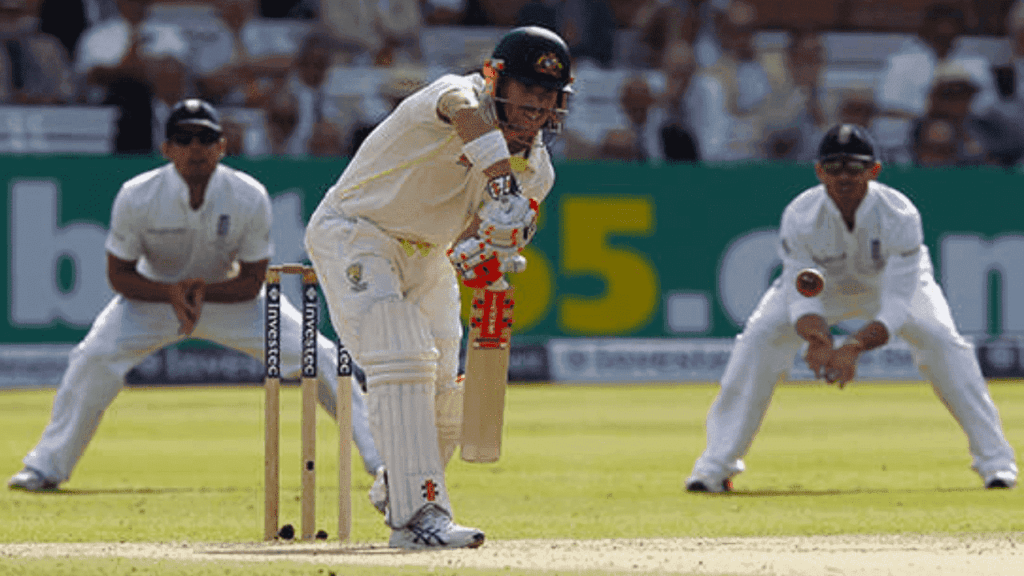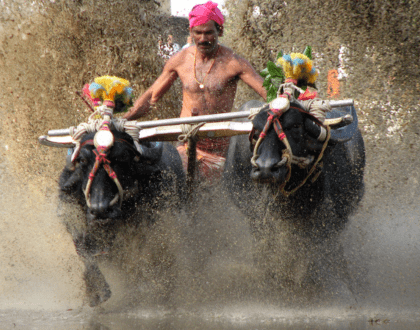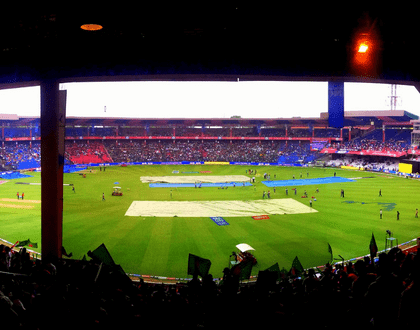Cricket, commonly referred to as the “gentleman’s game,” combines strategy, skill, and athleticism into one sport. While best known for its batting and bowling aspects, fielding is equally vital in determining match results. Fielders serve as unsung heroes behind the scenes in supporting bowlers and securing vital wickets; to truly understand its intricacies one must understand all its various fielding positions and roles played; our comprehensive guide explores every cricket fielding position’s significance while outlining how one must play successfully against its counterpart. Want To Know More About Every Cricket Fielding Positions.
Slips
- Number of Fielders: 2-4
- Position: Behind the batsman, adjacent to the wicketkeeper.
- Role: Slips are positioned to catch the edges of the bat. They need quick reflexes, excellent hand-eye coordination, and anticipation to take these crucial catches.
Slips are the primary catching positions in cricket. Fielders at slips stand close to the batsman, ready to pounce on any edge or deflection. These positions are numbered from the first slip (closest to the batsman) to the gully (farther away). Slip fielding requires a unique blend of concentration and agility.
| Suggested for You – TOP 10 ICONIC MATCHES IN THE HISTORY OF CRICKET
Gully
- Number of Fielders: 1
- Position: Between slips and points, on the off-side.
- Role: Gully is also a catching position, specializing in catching edges that may not reach the slips. It requires agility and quick reflexes.
The gully fielder acts as a backup for the slip fielders. Positioned slightly wider, they are often the last line of defense against edges that elude the slips.
Before we continue our list of Cricket’s fielding positions, it’s worth noting that Indians can bet on the Cricket World Cup here. The process is straightforward, from registration to bet placing. Knowing more of this great sport, it’s fielding position, formats and more can help bettors make informed decisions.

Point
- Number of Fielders: 1
- Position: On the off-side, behind the square, between the cover and gully.
- Role: Point fielders are responsible for stopping hard-hit groundstrokes on the off-side. They need strong arms and quick lateral movement.
Point fielders are crucial in preventing boundaries. They need to be quick on their feet, as they must cover ground quickly to stop powerful drives.
Cover
- Number of Fielders: 1
- Position: On the off-side, between point and mid-off.
- Role: Cover fielders are responsible for stopping drives and cuts on the off-side. They need to be agile and have good anticipation skills.
Cover fielders are often placed strategically to prevent batsmen from finding gaps in the field. Their role is to cut off scoring opportunities and create pressure.
| Suggested for You – TOP 10 UNBEATEN RECORDS IN THE CRICKET WORLD HISTORY
Mid-off and Mid-on
- Number of Fielders: 1 each
- Position: Mid-off is on the off-side, and mid-on is on the leg side.
- Role: These positions are responsible for stopping straight drives and encouraging batsmen to play the ball aerially. They need to have quick reflexes and strong arms.
Mid-off and mid-on fielders are strategically placed to induce mistakes from batsmen. They play a crucial role in restricting run-scoring opportunities.
Square Leg and Fine Leg
- Number of Fielders: 1 each
- Position: The square leg is on the leg side, and the fine leg is finer, near the boundary.
- Role: These positions are primarily responsible for stopping shots on the leg side and preventing boundaries. Quick movement and a strong arm are essential.
Square leg and fine leg fielders are often placed to protect the boundary on the leg side. They must be ready to chase down and field the ball quickly to keep runs in check.

Deep Fielders
- Number of Fielders: Varies
- Position: Spread across the boundary, both on the leg and off-side.
- Role: Deep fielders are positioned to stop boundaries and catch balls hit in the air. They need good anticipation, speed, and agility.
Deep fielders play a critical role in saving runs. They need to accurately judge the ball’s trajectory to position themselves effectively.
Point and Cover Sweeper
- Number of Fielders: Varies
- Position: Positioned deep on the off-side (point sweeper) and leg-side (cover sweeper).
- Role: Sweeper fielders are placed to prevent boundaries in the late stages of an innings. They need to have excellent ground-fielding skills and quick throws.
Point and cover sweepers are deployed to minimize the damage in limited-overs formats when batsmen are looking to find gaps and score boundaries.
| Suggested for You – TOP 10 MOST KNOWN CRICKET RIVALRIES OF ALL TIME
Extra Cover
- Number of Fielders: 1
- Position: Positioned slightly wide of mid-off.
- Role: Extra cover is responsible for cutting off drives on the off-side. Like cover fielders, they need good anticipation and agility.
The extra cover fielder is often used strategically to cover areas that may be vulnerable to drives.
Leg Slip and Leg Gully
- Number of Fielders: 1 each
- Position: Leg slip is behind the batsman on the leg side, while leg gully is closer to the batsman.
- Role: These positions are specialized catching positions for deliveries that may move sharply off the pitch toward the leg side. They require quick reflexes and courage.
Leg slip and leg gully fielders are rarely used but can be highly effective when spin bowlers extract extra bounce or turn.
Short Leg
- Number of Fielders: 1
- Position: Very close to the batsman on the leg side.
- Role: Short-leg fielders are positioned to catch deflections off the bat or pad. They need quick reflexes and excellent close-in fielding skills.
The short leg is one of the most challenging fielding positions, as fielders are exposed to the batsman’s powerful shots and have very little reaction time.
| Suggested for You – AMAZING FACTS AND HISTORY OF EDEN GARDENS
Silly point
- Number of Fielders: 1
- Position: Extremely close to the batsman on the leg side, almost under the batsman’s nose.
- Role: Silly point fielders are tasked with catching extremely fine edges or attempting to take a reflex catch off the batsman’s body or equipment. It requires nerves of steel and exceptional close-in fielding skills.
Silly point is a highly specialized and daring fielding position, often used when the batsman struggles against spin or bounce.
Takeaway
Cricket fielding is a diverse and highly specialized game aspect, with each position serving a specific purpose. Successful fielding requires a combination of agility, anticipation, quick reflexes, and a strong throwing arm.
Fielders play a crucial role in supporting bowlers, building pressure on batsmen, and turning the tide of a match. Next time you watch a cricket match, pay close attention to the fielding positions and appreciate the skill and strategy behind this vital aspect of the game.
| Suggested for You – SPORTS THAT NEED MORE ATTENTION LIKE CRICKET IN INDIA
–
If you enjoy reading it, comment below and leave your suggestions and any other topics that I should write about in the comments. Don’t just read alone share it with others in this way everybody will enjoy it. I will be back soon with another game or related info. Till then…
—DHANYAVAAD—





Somebody essentially lend a hand to make significantly posts I might state That is the very first time I frequented your web page and up to now I surprised with the research you made to create this particular put up amazing Excellent job